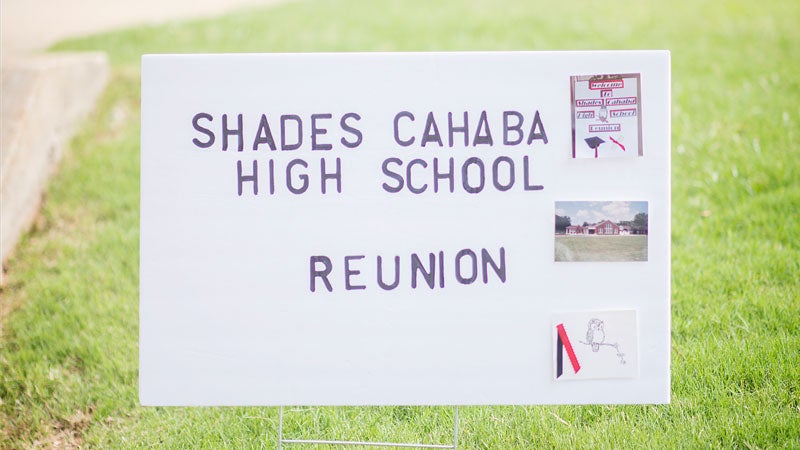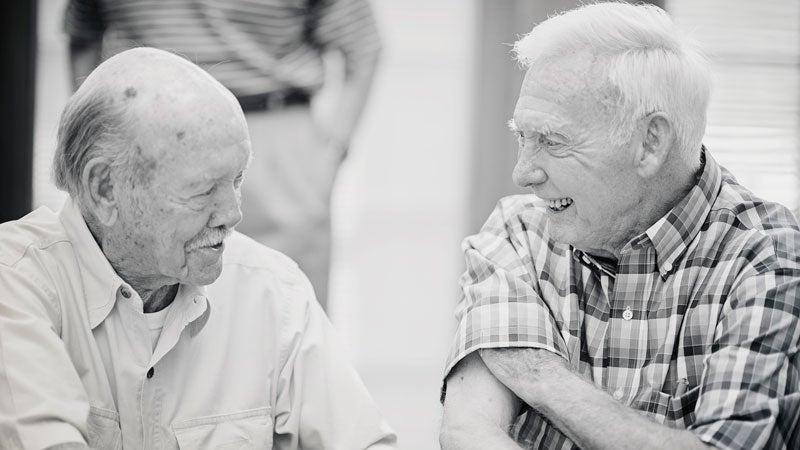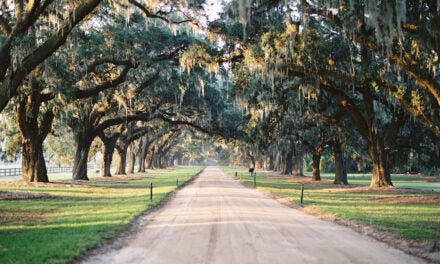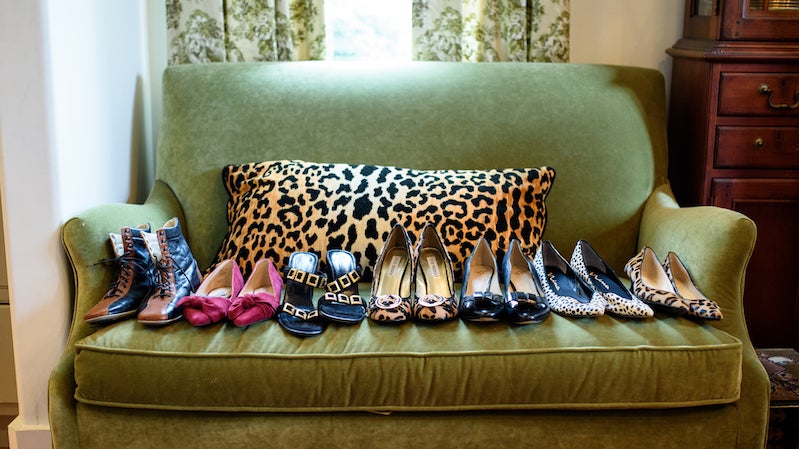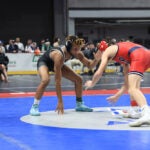Today we know Shades Cahaba as an elementary school, but it’s really much more than that. In 1920 Shades Cahaba High School became a place that brought people together from all over Shades Valley: Edgewood, Irondale, Crestline, Shannon, Oxmoor, Patton Chapel and Cahaba Heights. It gave people in a rural area an opportunity to get a great education. It created an identity. It gave people something to be proud of. You can’t look through the old yearbooks and not get a sense of the enthusiasm that people “Over the Mountain” had for their school. And 70 years later, you still get that sense from its alumni.
Almost every summer since 1988 Shades Cahaba High School graduates gather in the now-elementary lunch room to harken back to a time when Shades Cahaba was considered a “country” school. Formally the June event this year was the Class of 1948’s 70th reunion, but an invitation was also extended to anyone who attended Shades Cahaba High School around that time.
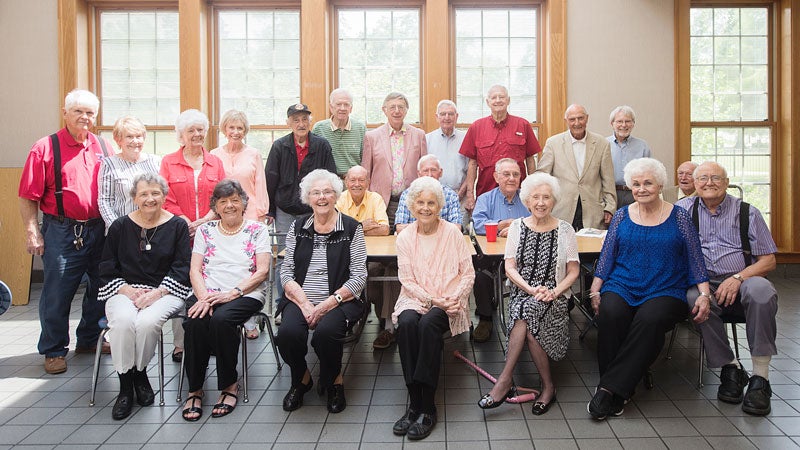
Front Row: Brownie Hill, Ruth Sheppard Helms, Inice Carlisle Tarrant, Joann Potts Haltiwanger, Margaret Jones Walker, Joan Eddleman Kopp, Herb Griffin
Middle Row: Bill Mize, Dalmus Haltiwanger, Calvin McCulloh, Arthur McConnell
Back Row: Charlie Lane, Charlotte Johnson French, Betty Jones Nesmith, Billie Johnson Hayes, Ray Berry, Ray Cunningham, Dr. Denny Pappas, Dr. R.B. Kent, Ronald Jones, Sam Romano, Wallace Inscho
On this hot summer afternoon, 22 classmates entered the “new front” of the school. (The “old front” of the school faces Hollywood Boulevard and if you stand under the door, you can see where “Shades Cahaba High School” used to be carved into the stone.) As they enjoyed refreshments and reminscened, they flipped through a collection of Shades Cahaba yearbooks that span from 1926-1951 that are now a part of the library at Shades Cahaba Elementary School. Because of the education they received at Shades Cahaba, many of these students had gone on to pursue jobs and careers that their parents probably never dreamed of, but today most conversations center on an earlier era.
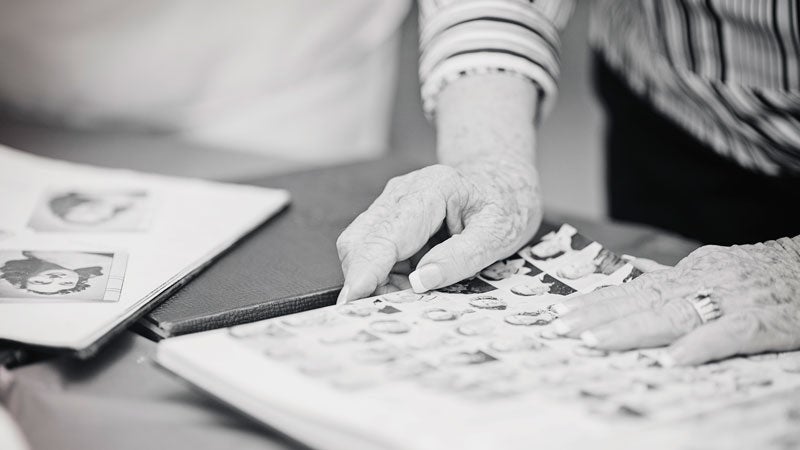 This year Inice Carlisle Tarrant, Class of 1945, had driven up with her daughter, Neecie Tarrant, from Dothan for the reunion. Her grandfather Binion Waller, a leader of the Freemasons at the Shades Valley Lodge and an employee of the Birmingham Electric Company, ran a dairy farm in what is now the Mayfair neighborhood in Homewood. His original farm house is still located at 1749 Oxmoor Road.
This year Inice Carlisle Tarrant, Class of 1945, had driven up with her daughter, Neecie Tarrant, from Dothan for the reunion. Her grandfather Binion Waller, a leader of the Freemasons at the Shades Valley Lodge and an employee of the Birmingham Electric Company, ran a dairy farm in what is now the Mayfair neighborhood in Homewood. His original farm house is still located at 1749 Oxmoor Road.
Nearby are Billie Johnson Hayes and her sister, Charlotte Johnson French, who grew up near Patton Chapel in what is now Hoover. They used to pray for snow knowing that the school bus couldn’t make it down Shades Mountain on Old Montgomery Highway in the snow and ice.
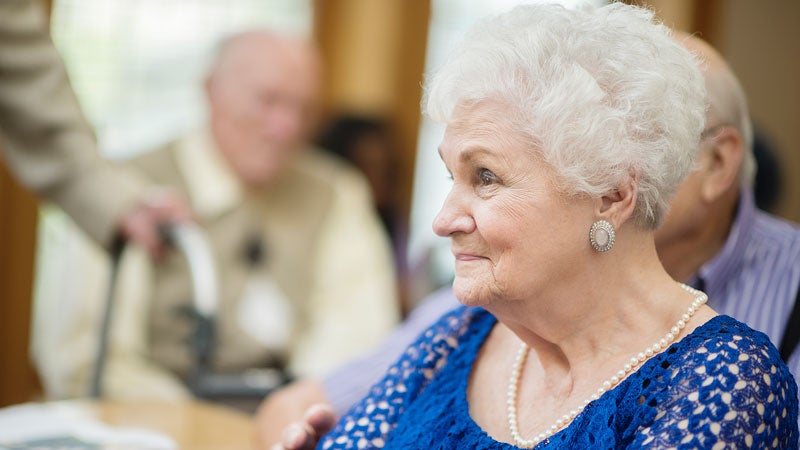
Joan Kopp
It’s quickly obvious who the ringleader of the group is: Joan Eddleman Kopp. It was she who collected the yearbooks they are all perusing, and she has kept scrapbooks and notes from every reunion so that she can make sure she invites everyone each and every summer.
Joan grew up on Sutherland Place in Edgewood and attended Edgewood Elementary School before moving to Shades Cahaba in ninth grade. Her sophomore year she took the street car to Phillips High School before returning to Shades Cahaba in the middle of her junior year. Joan was active in the choir and Jewell Y-Teens, helped write the school newspaper, and was voted “biggest flirt” of her senior class. In 1948 she starred in the senior class play, “Every Family Has One,” as the grandmother. As one of the most social students at Shades Cahaba, she spent her free time hanging out at the Pig Trail Inn, Dunn’s Drug Store and Hollywood Country Club.
Joan also has the distinction of being the only undefeated football coach in the history of Shades Cahaba School. There was quite a rivalry between Shades Cahaba and Edgewood Elementary, and Shades Cahaba couldn’t find a coach. Joan volunteered her services and managed to beat Edgewood twice that year. One of her former players, Charlie Lane, still lives in Homewood and stays in touch with her.
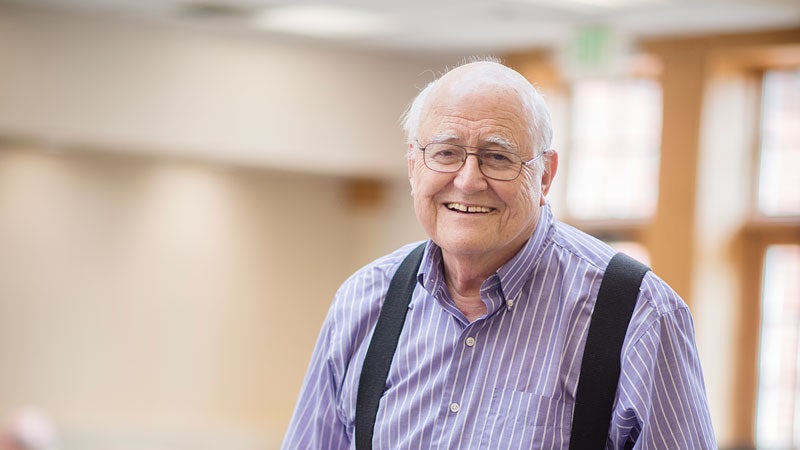
Herb Griffin
Back in eighth grade, Joan visited her Edgewood classmate Herb Griffin every day after he was hit by the Edgewood Electric Car while chasing his brother’s dog Flossie behind what is now Dawson Family of Faith. The two remain close today. For Herb, like Joan, Shades Cahaba wasn’t too far beyond the route he’d walked on logging trails to elementary school, or where he fish bream, bass and crappie in Griffin Brook and traveled to downtown Homewood to go to the theater on Friday and Saturday nights.
(Side note on Griffin Brook: Herb’s paternal great grandfather, Phillip Thomas Griffin Sr., had purchased roughly 160 acres in Shades Valley in 1858 and established ah homestead that was on the west side of Columbiana Road where Publix is now. Today Herb still lives on Sterrett in the same house that he grew up in.)
One of Herb’s most vivid memories of Shades Cahaba is traveling east on Oxmoor on the way to school and seeing Mrs. Clausen sweeping her yard on the corner of 18th street and Oxmoor, where a funeral home is now. Herb loved everything about Shades Cahaba and had a way (and still does) of making everyone he knew feel special.
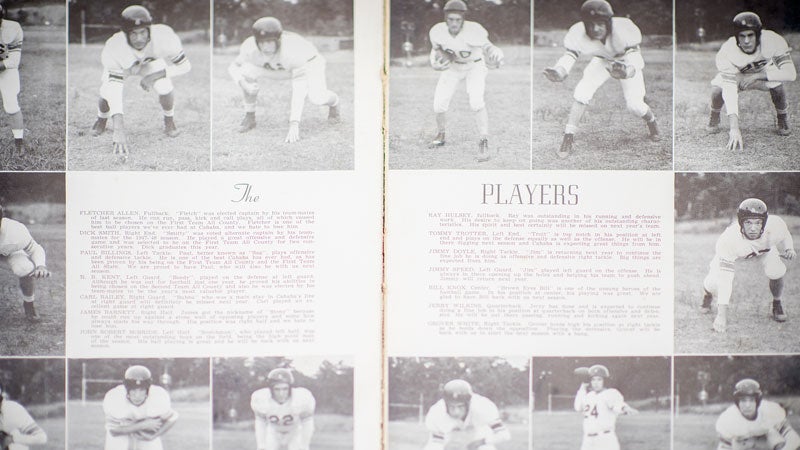 Dr. Raleigh Kent’s Shades Cahaba ties also started in Edgewood. In the summer after seventh grade, he rode his bicycle to Edgewood School to meet Shades Cahaba Coach Piggy Mitchell for baseball practice. They practiced every day from 8 a.m. to noon before taking a break to go down to Timmerson’s in Edgewood for a sandwich. At 1 p.m., the boys would play a game that only lasted about an hour because many of the boys had paper routes they needed to tend to. That summer, they played baseball all over Birmingham, against Ramsay, Phillips and Ensley. Six to eight boys would pile in Coach Mitchell’s pre-WWII black four-door Ford, with two to three mothers in toe to assist with transportation.
Dr. Raleigh Kent’s Shades Cahaba ties also started in Edgewood. In the summer after seventh grade, he rode his bicycle to Edgewood School to meet Shades Cahaba Coach Piggy Mitchell for baseball practice. They practiced every day from 8 a.m. to noon before taking a break to go down to Timmerson’s in Edgewood for a sandwich. At 1 p.m., the boys would play a game that only lasted about an hour because many of the boys had paper routes they needed to tend to. That summer, they played baseball all over Birmingham, against Ramsay, Phillips and Ensley. Six to eight boys would pile in Coach Mitchell’s pre-WWII black four-door Ford, with two to three mothers in toe to assist with transportation.
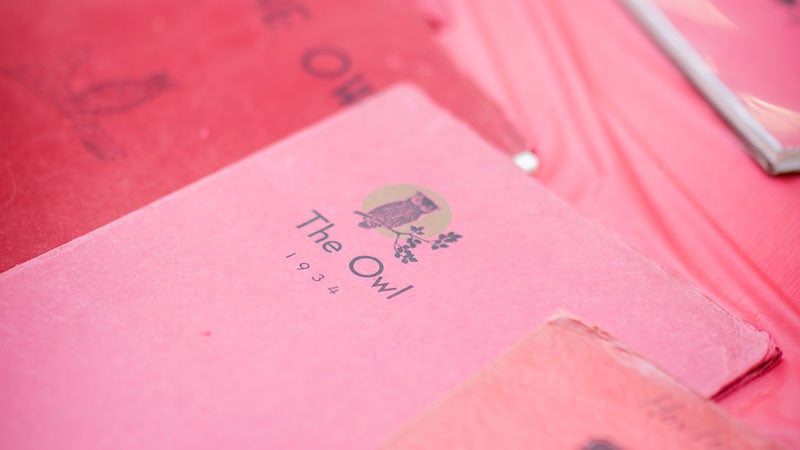 Raleigh would go on to become Shades Cahaba’s best pitcher as well as play guard and linebacker on the football team. He was named the football team MVP in 1948. He’d continue to play baseball on lunch breaks at Avondale Park when he worked for Continental Gin after high school, and in the summers through studying at Auburn University and then UAB Medical School before being his practice as a surgeon.
Raleigh would go on to become Shades Cahaba’s best pitcher as well as play guard and linebacker on the football team. He was named the football team MVP in 1948. He’d continue to play baseball on lunch breaks at Avondale Park when he worked for Continental Gin after high school, and in the summers through studying at Auburn University and then UAB Medical School before being his practice as a surgeon.
Raleigh and his classmates would become some of the last Shades Cahaba graduates before it became an elementary school, paving the way for three to four generations of families who have now walked its hallways. (In fact, one of Joan’s daughters, Steffayne Riley Giardina, taught elementary classes at Shades Cahaba for nine years.) In 98 years of existence, Shades Cahaba has long upheld values of education that were newly minted back in 1920 and deeply held by 1948. And now in 2018, there’s still plenty for people to be proud of.
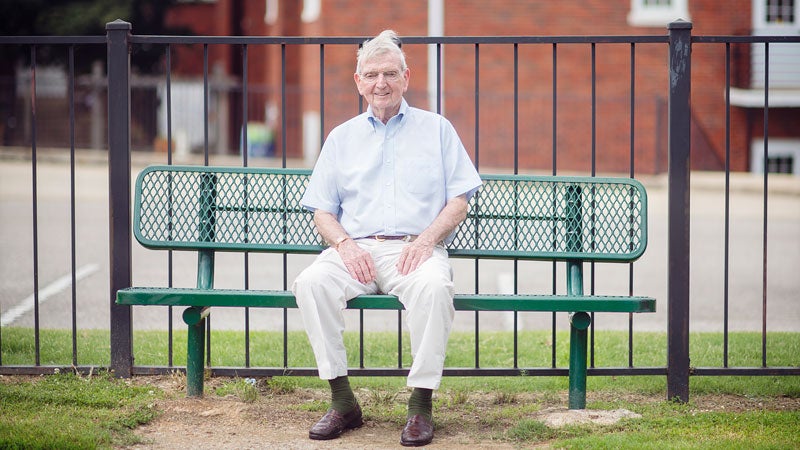 A Hall-Kent Namesake
A Hall-Kent Namesake
Shades Cahaba graduate Dr. Raleigh B. Kent Jr.’s grandfather, John A. Kent, came to Homewood in 1899 and operated a large dairy farm in what is now West Homewood. Today he can still point out where gypsies used to live, the site of their hog pen, and the where the old “Odd-Fellows” home was. He still knows every creek and path in West Homewood too.
Kent Dairy was extremely successful and even made its own 40-pound slabs of ice. Milk was delivered to customers every day, and when stores ran low. Raleigh was sent in his father’s 1941 Hudson to make extra deliveries during World War II. One particular time Raleigh was making a milk run when he was spotted by Homewood police officer E.V. Smith. Smith, knowing that a 13-year-old shouldn’t be driving a vehicle, thought about stopping young Raleigh but knew that he was delivering milk in the valley so he didn’t stop him.
In his teenager years, it wasn’t exactly a short walk to get to Hollywood from West Homewood for a date. So, Raleigh saddled up two horses, rode up Saulter Road and along Bald Ridge to pick up a young lady for an afternoon of horseback riding through Homewood.
Raleigh’s parents moved to Mt. Ida in Talladega in 1950 and the old Kent Dairy Farm became a new subdivision we recognize today, but his childhood home still stands at 613 Cobb Street.
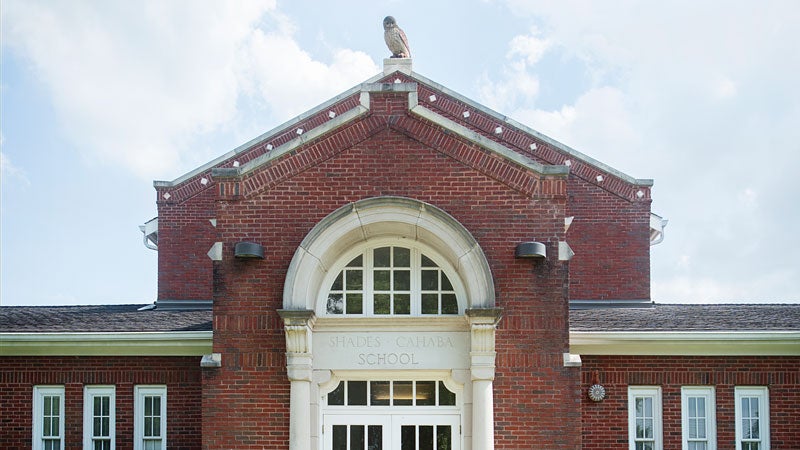 Shades Cahaba Through the Years
Shades Cahaba Through the Years
1916
Zelosophian Academy graduates Will Franke and William Acton convinced the Jefferson County Board of Education of the necessity of a public school south of Red Mountain in Shades Valley. A three-mill tax was passed that covered the cost of building the new school.
1920
Under the leadership of Principal James. M. Ward, Shades Cahaba High School opened with four high school grades, five teachers and 156 students. Ward stayed at Shades Cahaba until 1943 when he took an administrative position with the Jefferson County Board of Education.
1920s
Shades Cahaba always fielded exceptional sports teams. In the 1920s, the football and baseball teams were coached by Sidney Malloy. After Malloy, Oren “Piggy” Mitchell ran the program before moving to the new Shades Valley High School.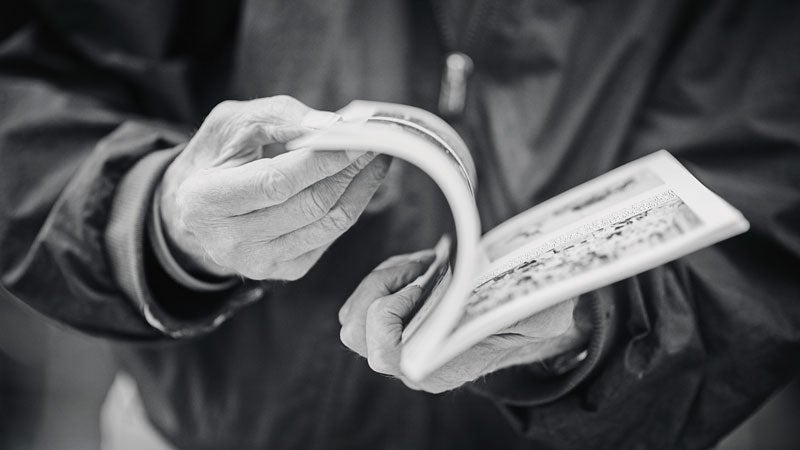
1927
Shades Cahaba had a new lunchroom run by Mrs. Margie Cross and Mrs. Later, Ida H. Tyler ran the lunchroom from 1932 until 1955. As more people began to pour into Shades Valley in the 1920s, the school had continued to add onto the main building.
1930s
Shades Cahaba continued to thrive through the Great Depression and relied heavily on the citizens of the valley to meet the needs of students.
1940s
By 1940, Shades Cahaba was the only school in the state that had an athletic field with lights, speakers and an electronic scoreboard. Throughout the ‘40s, the school achieved high academic and athletic successes.
1949
Shades Cahaba became an elementary school, and high school students who previously went there began attending Shades Valley High School.